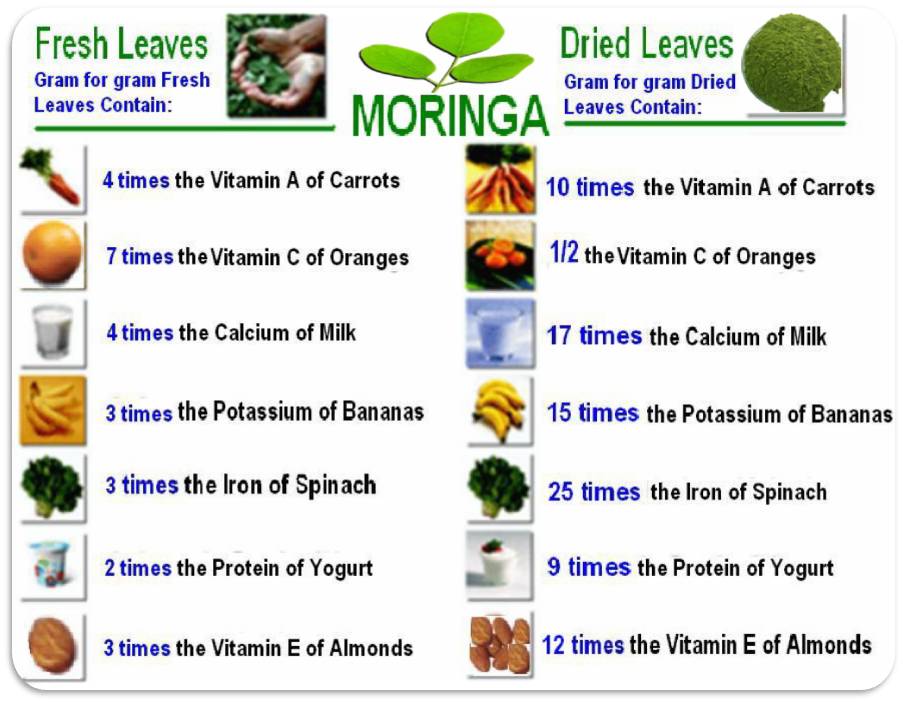6 Reasons Why Moringa Is Being Hailed as a Superfood
 Moringa oleifera is a fast-growing tree native to South Asia and now found throughout the tropics. Its leaves have been used as part of traditional medicine for centuries, and the Ayurvedic system of medicine associates it with the cure or prevention of about 300 diseases.
Moringa oleifera is a fast-growing tree native to South Asia and now found throughout the tropics. Its leaves have been used as part of traditional medicine for centuries, and the Ayurvedic system of medicine associates it with the cure or prevention of about 300 diseases.
Moringa, sometimes described as the “miracle tree,” “drumstick tree,” or “horseradish tree,” has small, rounded leaves that are packed with an incredible amount of nutrition: protein, calcium, beta carotene, vitamin C, potassium… you name it, moringa’s got it. No wonder it’s been used medicinally (and as a food source) for at least 4,000 years.
A 2013 study published in the Journal of Food and Nutrition Sciences shows that, when Moringa is mixed in with different cereals, malnourished children regained normal weight and health status in 30-40 days, while the United Nations Industrial Development Organization (UNIDO) recipe for malnourished children took 80 days — double the difference.

There is no denying that moringa offers an impressive nutritional profile that makes it appealing once it is harvested. You can get the benefits of moringa using fresh moringa leaves, powdered moringa, or cold-pressed moringa oil.
I do not recommend planting a Moringa Tree in your backyard for health purposes as the leaves are very small and it is a timely and exceedingly tedious task to harvest the leaves from the stem to eat them but if you if you still want to plant your own Moringa Tree, I’ve included a Video, down below, with the Complete Guide to grow this Superfood from Seed to Tree.
6 Reasons Why Moringa Is Being Hailed as a Superfood:

1. A Rich Nutritional Profile
Moringa leaves are loaded with vitamins, minerals, essential amino acids, and more. One hundred grams of dry moringa leaf contains:
9 times the protein of yogurt
10 times the vitamin A of carrots
15 times the potassium of bananas
17 times the calcium of milk
12 times the vitamin C of oranges
25 times the iron of spinach
2. Antioxidants Galore
Moringa leaves are rich in antioxidants, including vitamin C, beta-carotene, quercetin, and chlorogenic acid. The latter, chlorogenic acid, has been shown to slow cells’ absorption of sugar and animal studies have found it to lower blood sugar levels.
3. Lower Blood Sugar Levels
The Many Uses of the Mighty Moringa Tree – Moringa Leaf – Moringa appears to have anti-diabetic effects, likely due to beneficial plant compounds contained in the leaves, including isothiocyanates.
4. Reduce Inflammation
The isothiocyanates, flavonoids, and phenolic acids in moringa leaves, pods, and seeds also have anti-inflammatory properties.
5. Maintain Healthy Cholesterol Levels
Moringa also has cholesterol-lowering properties, and one animal study found its effects were comparable to those of the cholesterol-lowering drug simvastatin.
6. Protect Against Arsenic Toxicity
The leaves and seeds of moringa may protect against some of the effects of arsenic toxicity, which is especially important in light of news that common foods, such as rice, may be contaminated. Contamination of ground water by arsenic has also become a cause of global public health concern.
Moringa Leaves May Even Purify Water… and More
From a digestive standpoint, moringa is high in fiber that helps clean up your intestines from any of that extra grunge left over from a greasy diet. Also noteworthy are its isothiocyanates, which have anti-bacterial properties that may help to rid your body of H. pylori, a bacteria implicated in gastritis, ulcers, and gastric cancer. Moringa seeds have even been found to work better for water purification than many of the conventional synthetic materials in use today.
There is speculation that moringa’s ability to attach itself to harmful materials may also happen in the body, making moringa a potential detoxification tool.
How to Use Moringa
There are many uses of the Moringa Tree – Moringa Poweder: If you have access to a moringa tree, you can use the fresh leaves in your meals; they have a flavor similar to a radish. Toss them like a salad, blend them into smoothies, or steam them like spinach. Another option is to use moringa powder, either in supplement form or added to smoothies, soups, and other foods for extra nutrition. Moringa powder has a distinctive “green” flavor, so you may want to start out slowly when adding it to your meals.
You can also use organic, cold-pressed moringa oil (or ben oil), although it’s expensive (about 15 times more than olive oil).
Original Article published in Wakeup-world.com (Written by Dr. Joe Mercola)
Moringa Nutritional Value – Summarized:

***** Fight 80 Disorders From Your Own Kitchen! Take A Look Here: >>>>> Aloe – Your Miracle Doctor
The complete Guide to Growing the Superfood Moringa from Seed to Tree:
Remember to take a look at Your Miracle Doctor!
A natural treatment for dozens of ailments!……
*****Fight 80 Disorders From Your Own Kitchen! Take A Look Here:
>>>>> Aloe – Your Miracle Doctor












